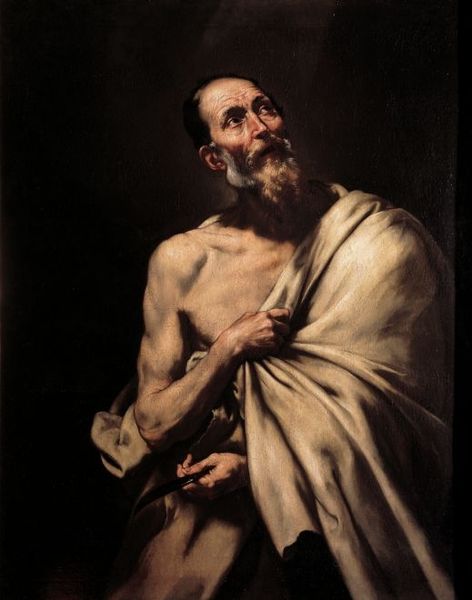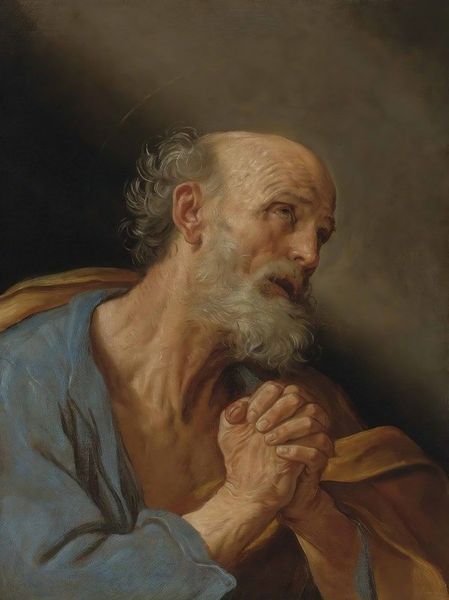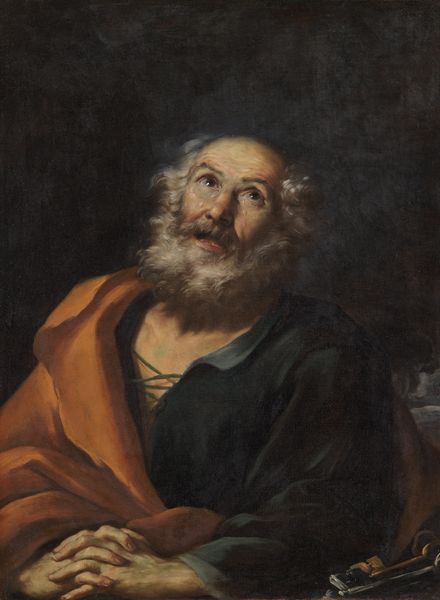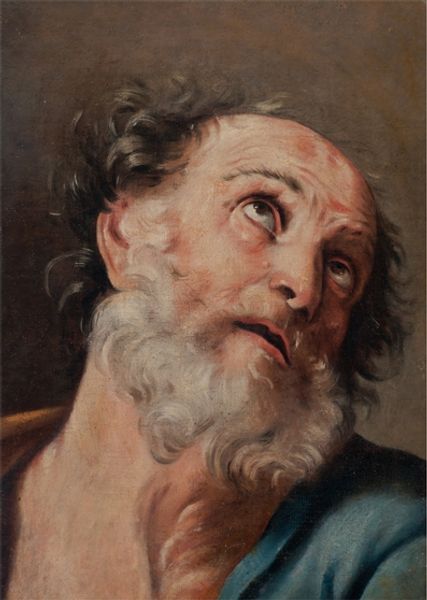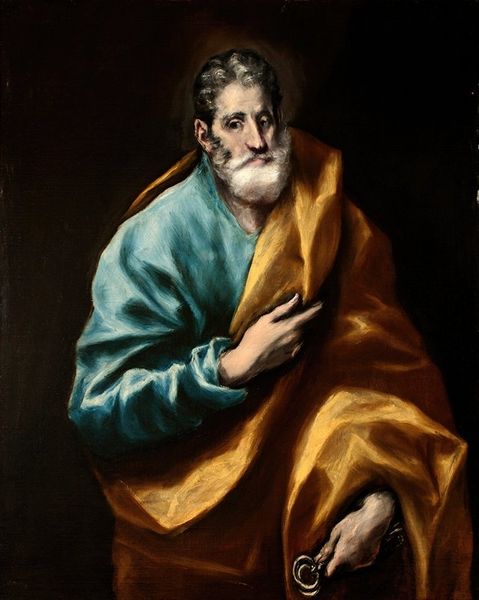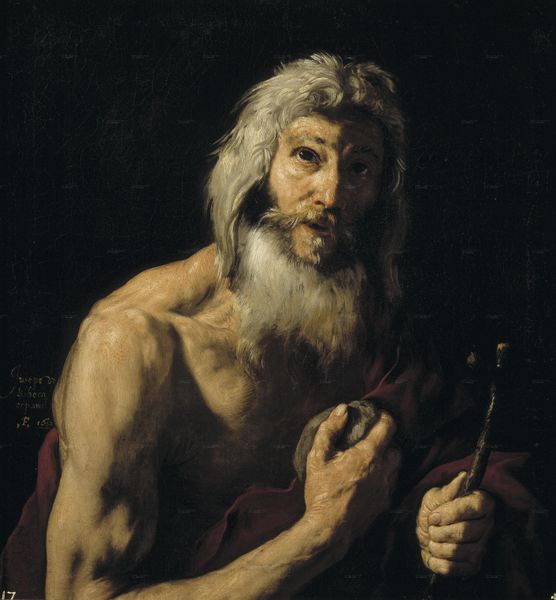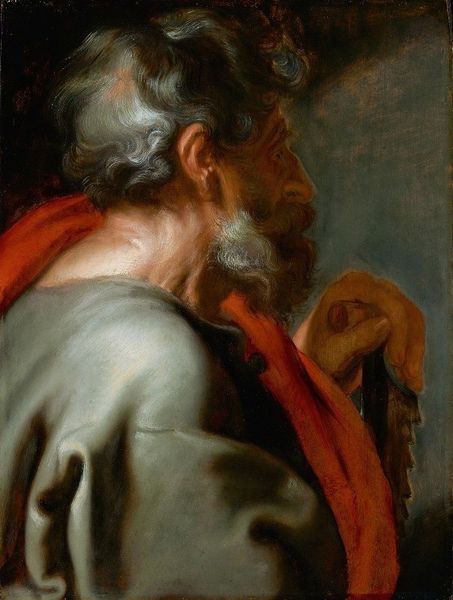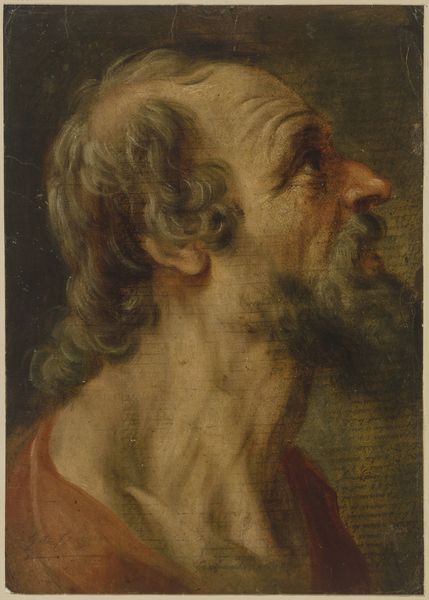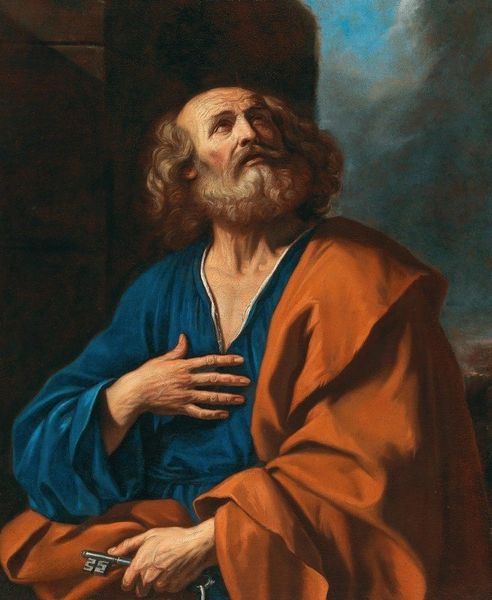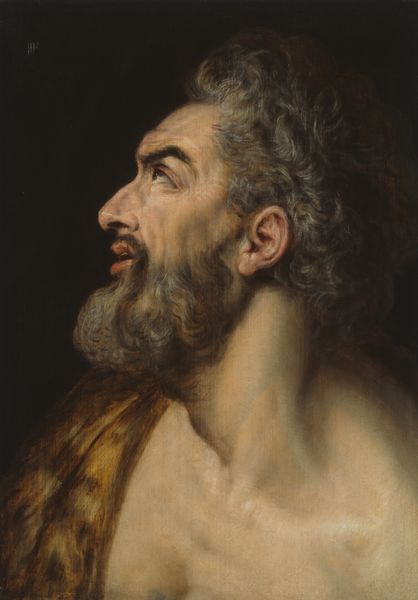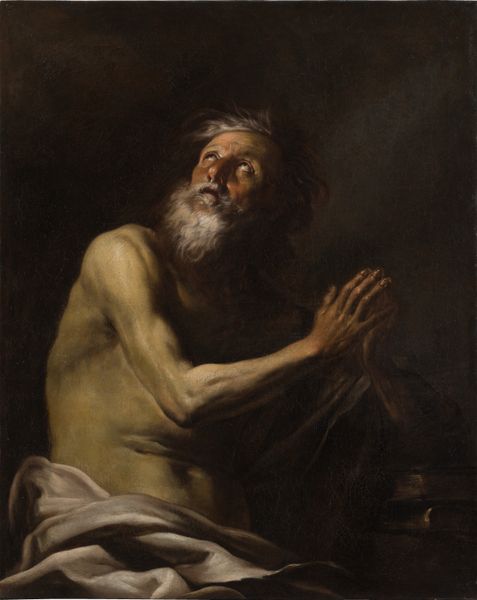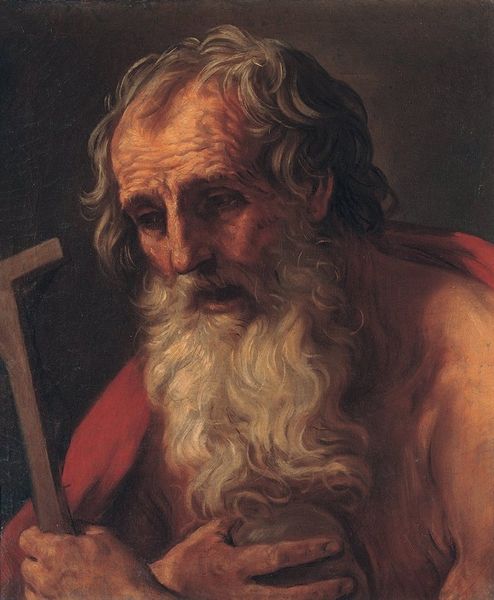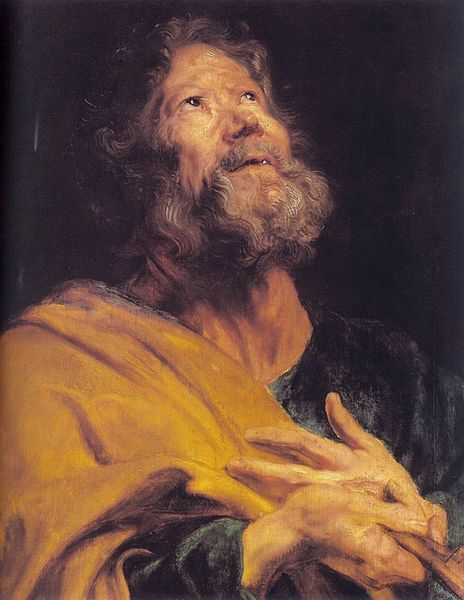
painting, oil-paint
#
portrait
#
baroque
#
painting
#
oil-paint
#
chiaroscuro
#
history-painting
#
italian-renaissance
Copyright: Public domain
Art Historian: Here we have "The Penitent Saint Peter," an oil painting attributed to Guido Reni. Curator: It strikes me immediately as a study in contrasts – the harsh wrinkles etched deep into his face against the buttery softness of the light. It feels…uncomfortable. Art Historian: That discomfort, I think, speaks to the Baroque sensibility. The painting depicts Saint Peter, traditionally the gatekeeper of Heaven, in a moment of deep sorrow, possibly reflecting his denial of Christ. Curator: That's the traditional reading, certainly. But I see something else. Look at how the light avoids him, illuminating the golden drapery instead. Is this painting really about penitence, or is it about shame? Peter's story, particularly his betrayal, has been weaponized for centuries. Does this image unintentionally reinforce that? Art Historian: Shame and penitence are, of course, linked. The upward gaze, common in depictions of saints, indicates a connection to the divine and a yearning for forgiveness. Curator: The upward gaze can also signify helplessness. How much agency does Peter have in this image? Is he actively seeking redemption, or is he passively waiting for it? His hands, clasped so tightly, could equally express prayer or anxiety. Art Historian: The lack of specific dating makes pinning down intent tricky. However, Guido Reni was known for idealizing his subjects, even in moments of distress. Curator: Idealizing while also… obscuring. The darkness that shrouds most of the background, and seems to cling to parts of his face – is that just dramatic chiaroscuro, or is it symbolic? What is being hidden from the viewer, or perhaps from Peter himself? Art Historian: Perhaps it highlights the interiority of faith, the private struggle with morality. Curator: Or perhaps, even centuries later, it mirrors our ongoing struggle to reconcile faith with accountability. This painting invites not reverence but complex ethical questions. Art Historian: It is truly fascinating how an artwork can transform our understanding of both cultural history and individual psychological states. Curator: Yes, a good reminder that art rarely offers easy answers; it provides ongoing dialogues.
Comments
No comments
Be the first to comment and join the conversation on the ultimate creative platform.
